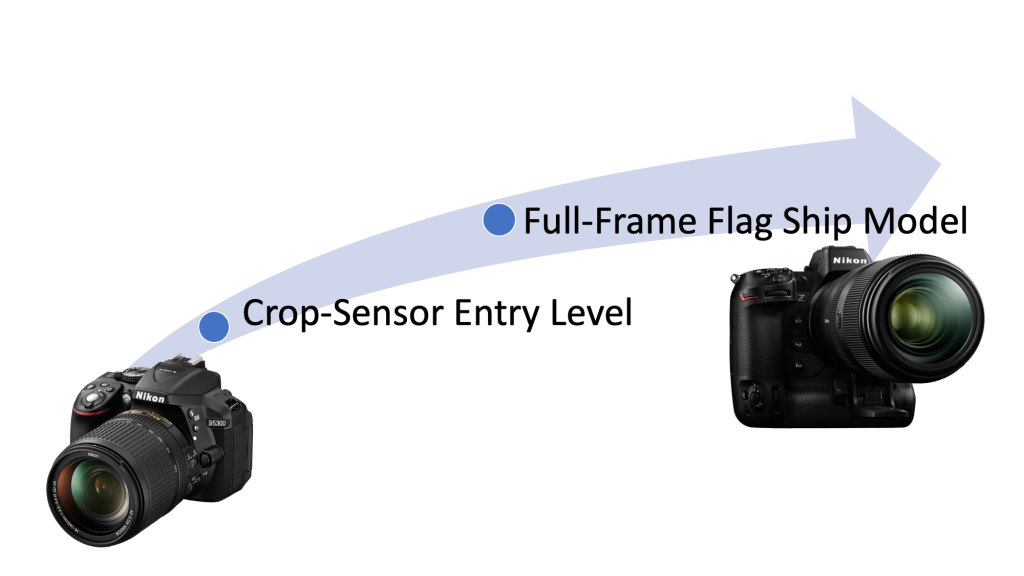In photography, the allure of the latest camera gear is hard to resist. With each new release promising higher resolutions, faster autofocus, and better low-light performance, it’s easy to feel that upgrading is the only way to stay ahead. However, the truth is not everyone will benefit from upgrading their camera. Here’s why:
Higher ISO Isn’t Always Necessary
For many photographers, shooting at high ISO settings isn’t a daily requirement. Most digital cameras today perform exceptionally well at lower ISOs, providing crisp and clear images without needing the latest model. If your photography rarely involves dim lighting or fast-moving subjects, an upgrade might be more about wanting the latest gadget than needing it.
Tripod-Based Photography
If your work involves using a tripod and your subjects are stationary, such as in landscape, architecture, or product photography, the benefits of upgrading from a crop sensor to a full-frame camera might be minimal. When you’re shooting with controlled lighting and stable setups, the difference in sensor size becomes less critical. Your current gear can likely deliver the quality you need.
Studio Portraits
For portrait photographers who primarily work in a studio setting with controlled lighting and flashes, upgrading your camera might not significantly improve your work. Studio flashes offer ample light, allowing you to shoot at low ISO settings where most modern cameras excel. The resolution and dynamic range provided by even mid-range cameras are more than sufficient for stunning portraits.
Other Photography Genres That Thrive at Low ISO
- Still Life Photography: Life involves careful composition and controlled lighting, like product photography. The need for high ISO is rare, making most modern cameras perfectly adequate.
- Macro Photography: When shooting macro, you typically control the lighting and your subject’s movement. This allows you to use lower ISO settings and longer shutter speeds with a tripod, minimizing the need for the latest camera tech.
- Food Photography: Often involves well-lit environments, whether natural or artificial. With controlled lighting setups, there’s no need for high ISO performance, and your current gear will likely do the job well.
- Astrophotography: While it might seem counterintuitive, astrophotography relies more on long exposures and precise settings than high ISO performance. Using a stable tripod and techniques like stacking images can yield excellent results without needing the latest camera model.
- Fine Art Photography: Often created in controlled settings, fine art photography can benefit more from the photographer’s vision and technique than the camera’s specifications. Low ISO and careful post-processing are key elements.
Conclusion
Upgrading your camera isn’t always the key to better photos. Assessing your specific needs and understanding the strengths of your current equipment can save you money and help you focus on improving your skills. For many genres of photography, mastering the basics and using the gear you already have will bring more significant improvements to your work than the latest camera upgrade.
Remember, the storyteller behind the camera, not the camera itself, makes a compelling image. Happy shooting!

When Upgrading Your Camera is Worth It
Consider upgrading your camera if you find yourself in any of these situations:
- Low-Light Conditions: Frequently shooting in dim environments such as:
- Event Photography
- Wildlife photography at dawn or dusk
- Indoor sports
- Concert photography
- High ISO Performance: Better sensor technology is needed to reduce noise and improve image quality in low-light settings.
- High-Resolution Demands: Requiring extremely high resolution for:
- Large prints
- Detailed commercial projects
- Fine art photography
- Advanced Autofocus Systems: Benefiting from faster and more accurate autofocus for:
- Action photography
- Sports photography
- Wildlife photography
- Meeting Client Demands: When your current gear limits your ability to deliver the quality and detail your clients expect.
If any of these scenarios apply to you, investing in an upgrade can be a wise decision to enhance your creative potential and professional capabilities.

